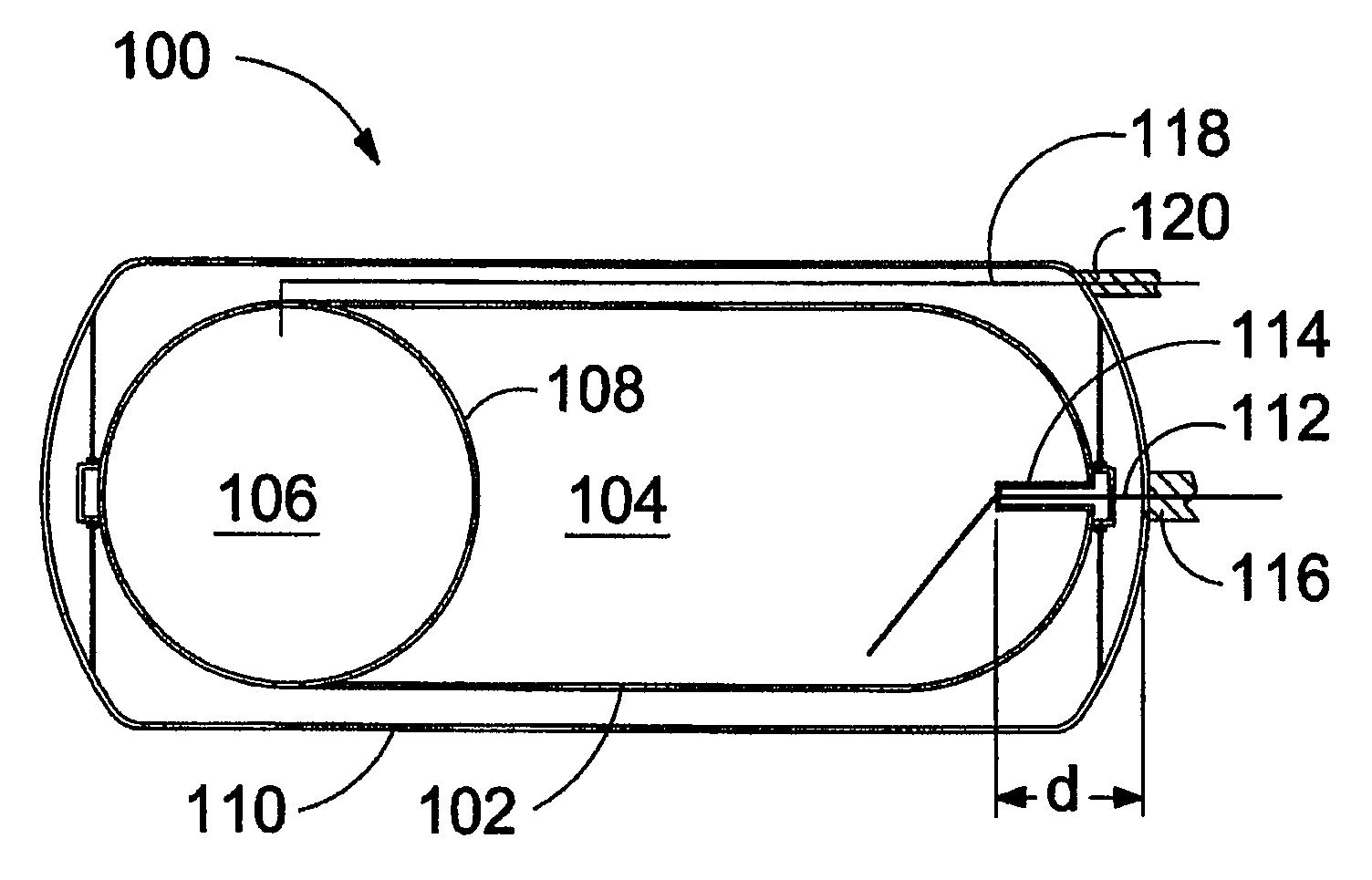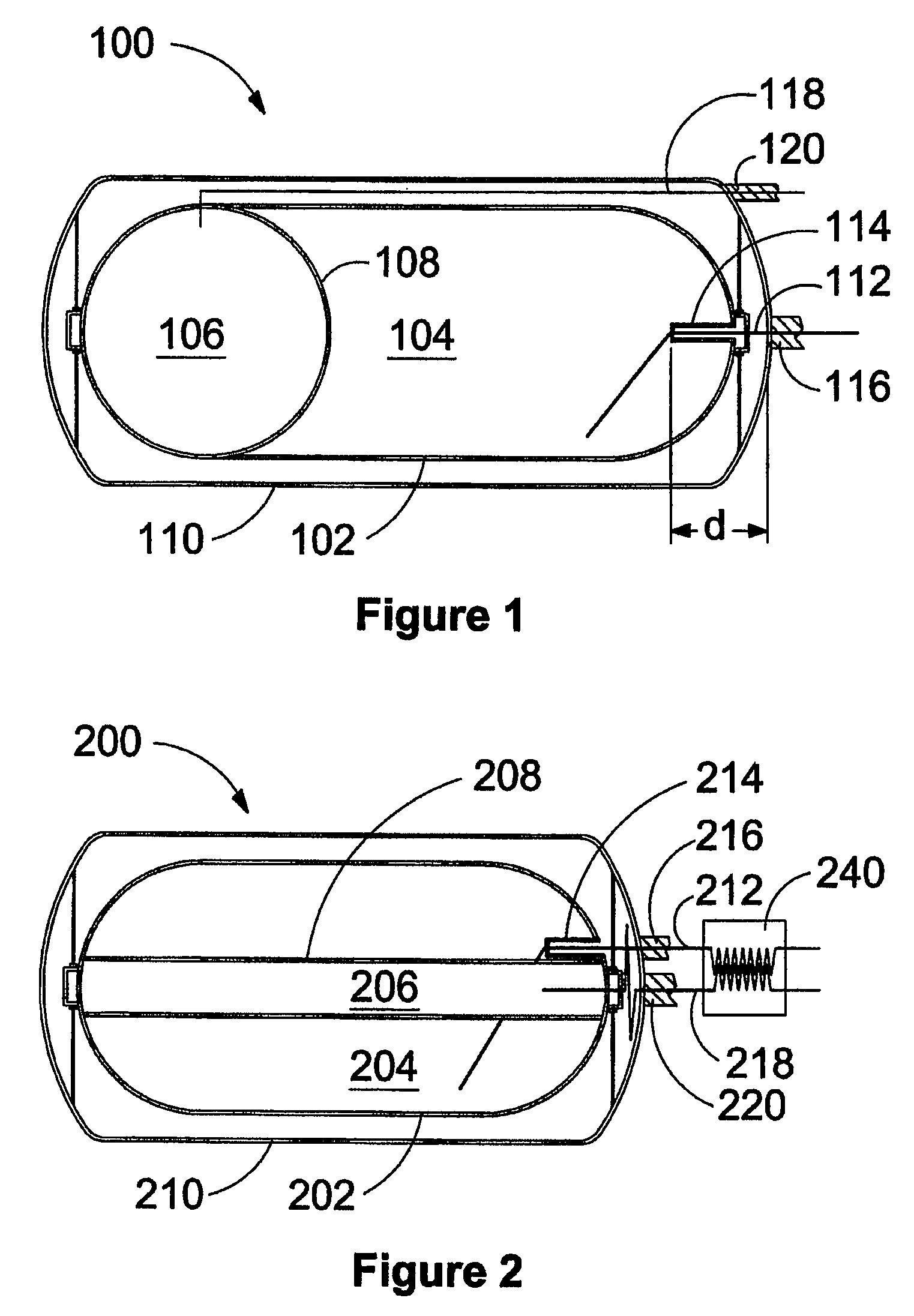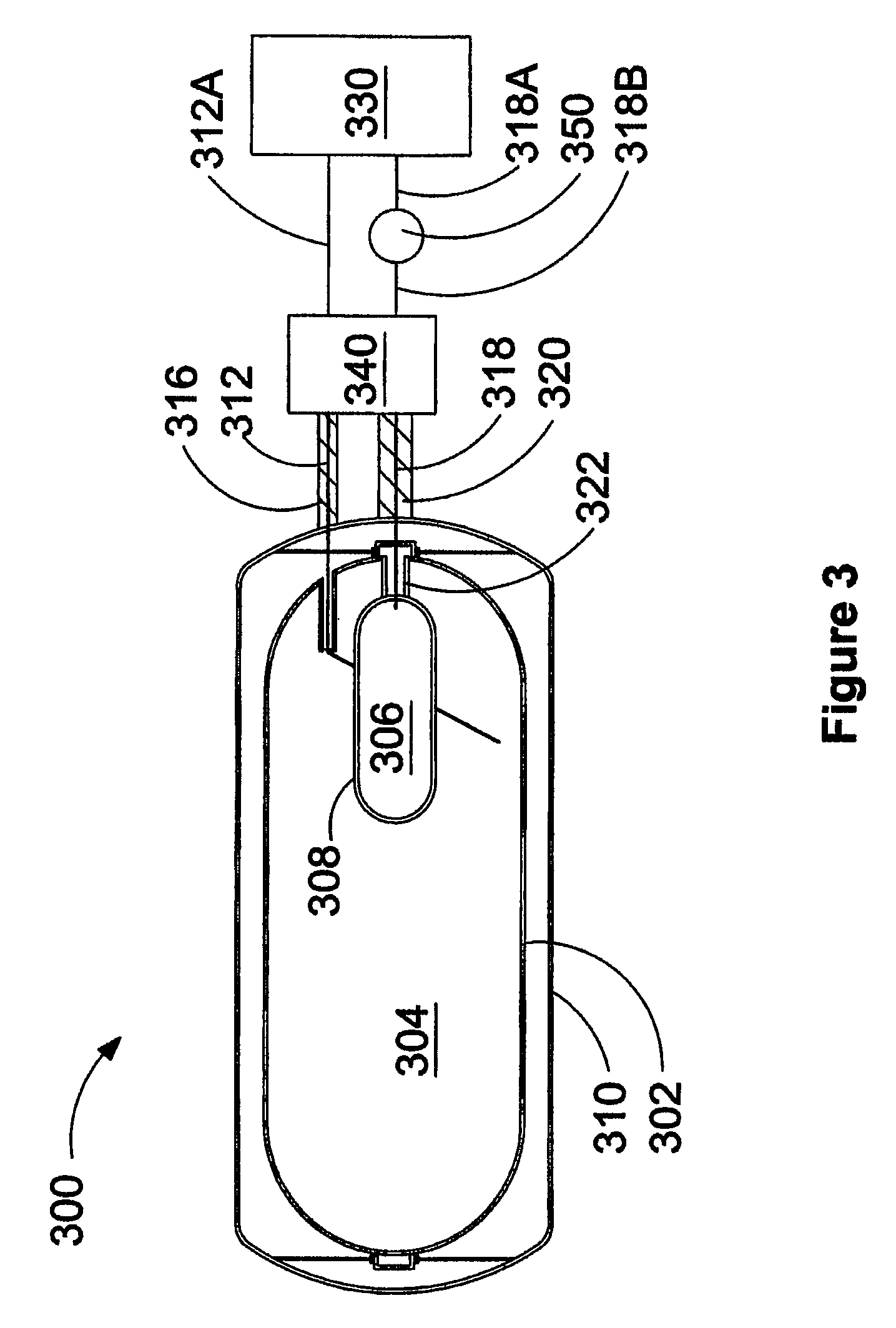Multi-fuel storage system and method of storing fuel in a multi-fuel storage system
a multi-fuel storage and storage system technology, applied in the direction of fuel cells, inorganic chemistry, combustible gas production, etc., can solve the problems of difficult to find space to store an adequate amount of fuel, large storage tanks, and difficult to store hydrogen as compressed gas. , to achieve the effect of reducing time, reducing energy consumption, and reducing tim
- Summary
- Abstract
- Description
- Claims
- Application Information
AI Technical Summary
Benefits of technology
Problems solved by technology
Method used
Image
Examples
Embodiment Construction
)
[0026]FIG. 1 is a schematic drawing of apparatus 100 for separately storing and delivering a first gaseous fuel and a second gaseous fuel. Apparatus 100 comprises first vessel 102, which defines first thermally insulated space 104 in which the first gaseous fuel can be stored in liquefied form. Second thermally insulated space 106, which can hold the second gaseous fuel, is disposed within first vessel 102. Second thermally insulated space 106 is separated from first thermally insulated space 104 by thermally conductive barrier 108. The second gaseous fuel liquefies at a lower temperature than the first gaseous fuel so that the second gaseous fuel can be stored within second thermally insulated space 106 in a gaseous form. While both first and second thermally insulated spaces 104 and 106, are respectively thermally insulated from the ambient temperature outside outer shell 110, thermally conductive barrier 108 is a partition wall that divides the space inside vessel 102 into first...
PUM
| Property | Measurement | Unit |
|---|---|---|
| storage temperature | aaaaa | aaaaa |
| storage temperature | aaaaa | aaaaa |
| pressure | aaaaa | aaaaa |
Abstract
Description
Claims
Application Information
 Login to View More
Login to View More - R&D
- Intellectual Property
- Life Sciences
- Materials
- Tech Scout
- Unparalleled Data Quality
- Higher Quality Content
- 60% Fewer Hallucinations
Browse by: Latest US Patents, China's latest patents, Technical Efficacy Thesaurus, Application Domain, Technology Topic, Popular Technical Reports.
© 2025 PatSnap. All rights reserved.Legal|Privacy policy|Modern Slavery Act Transparency Statement|Sitemap|About US| Contact US: help@patsnap.com



